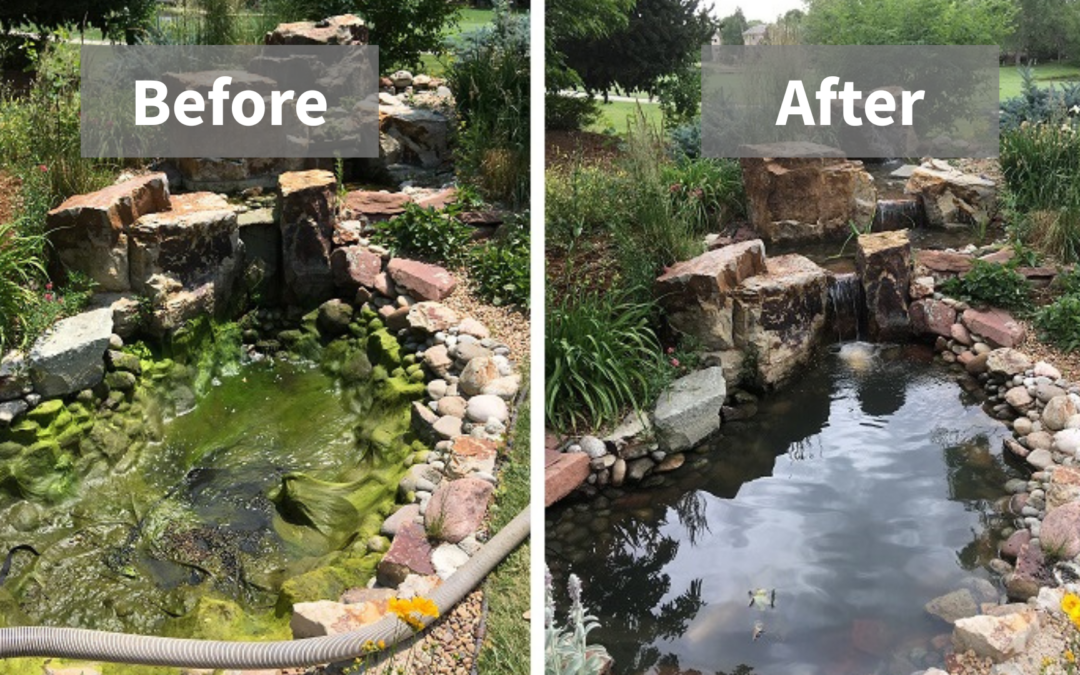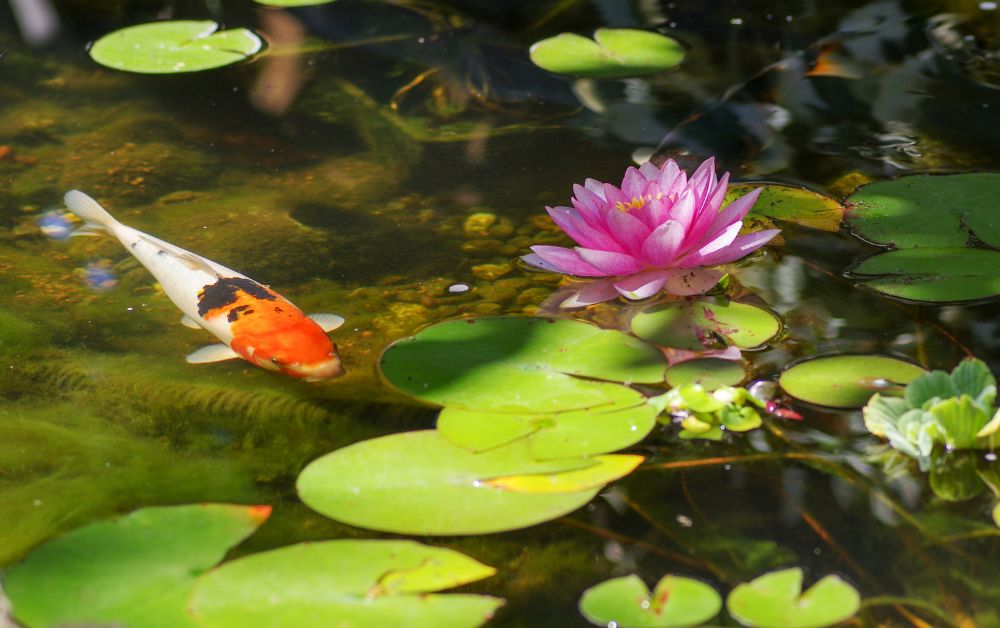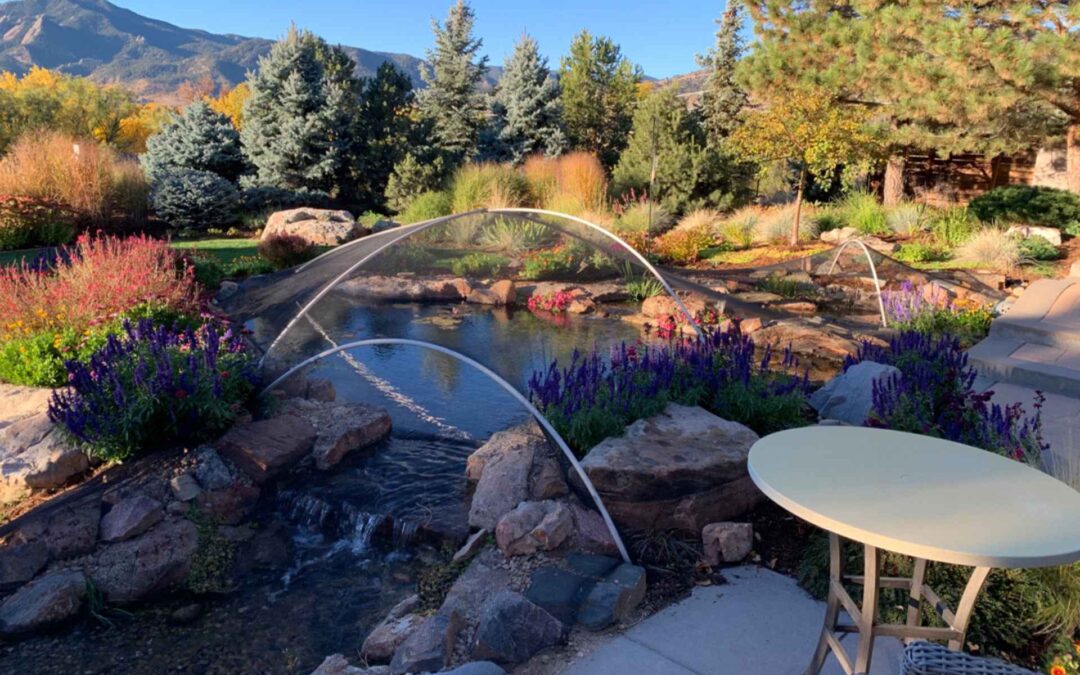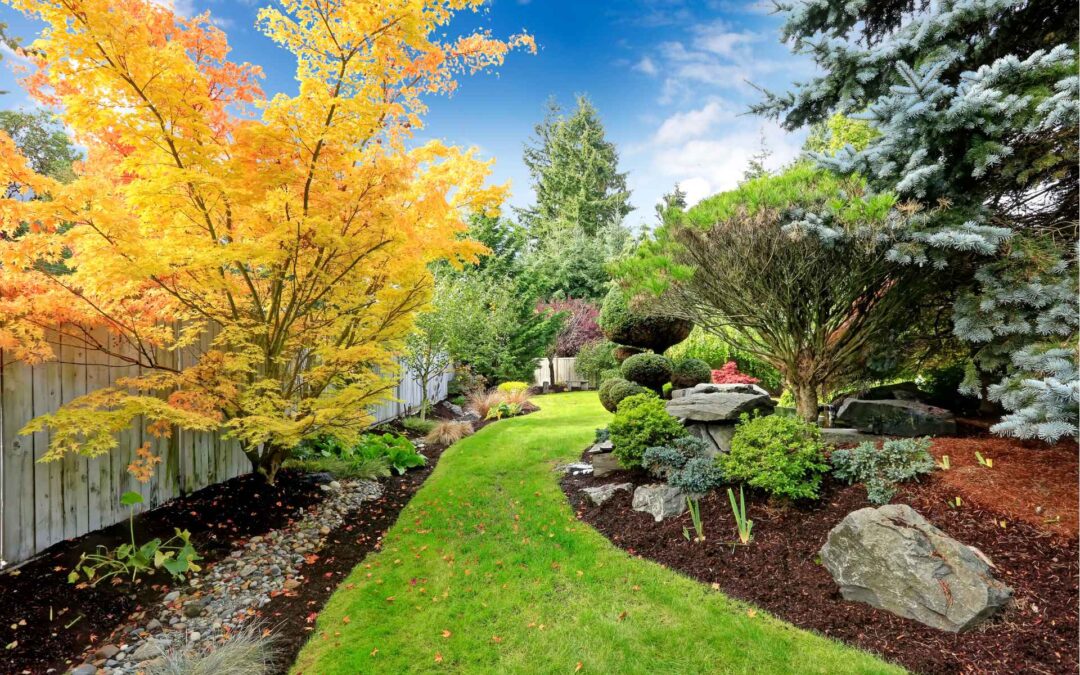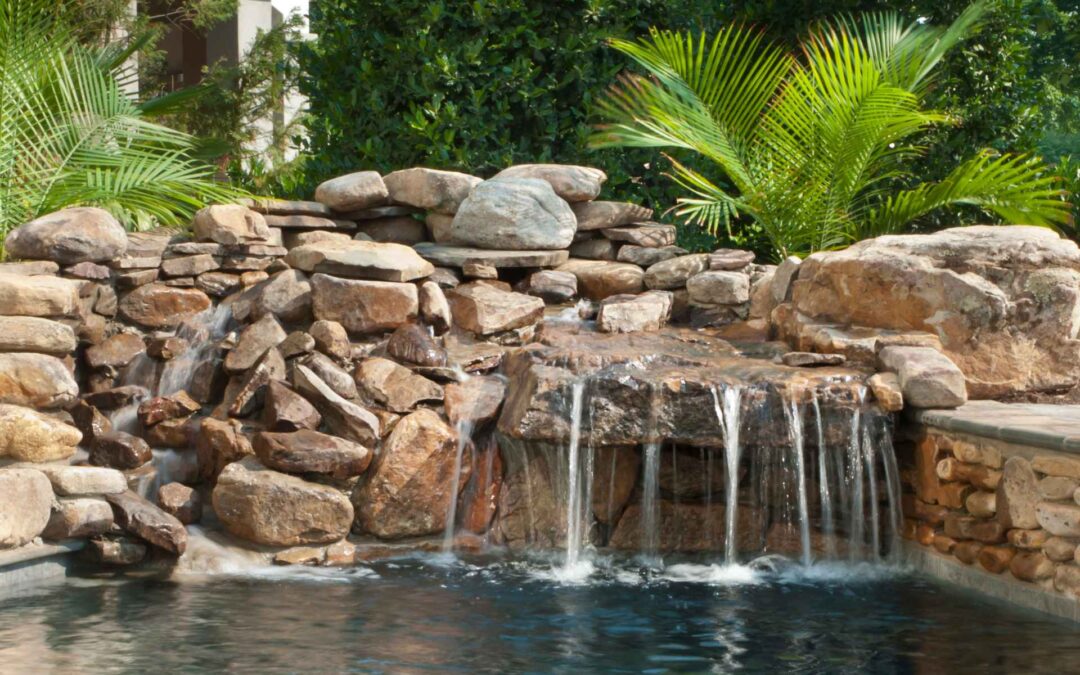Water Lilies
Hardy water lilies do well in a sunny Colorado pond. Benefits of lilies in the pond are many. The shade they provide gives shelter to fish from predators (you can’t eat what you can’t see!). They shade they provide keeps the pond cool and stabilizes the water temperature from fluctuations. Ponds in sunny locations with little or no plant life may experience more algae. Lilies help keep the pond in balance by providing oxygen and using up nutrients in the water that feed algae as well as blocking some of the sun.
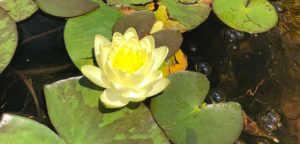
Things to know when first getting lilies:
- Plant in loam garden soil – not regular potting soil!
- Use a fabric aquatic plant pot or a plastic pot with holes. 14 to 16 inches is ideal.
- They will grow directly in the gravel, but will float up if not anchored down, and it can make cleaning out the pond or separating the plants later more difficult.
- These plants grow as a “rhizome” and the crown should not be covered by the soil.
- Put 2 or 3 fertilizer tabs into the soil for optimal flower color (Lilies come in a variety of colors!)
- When first introducing a lily to the pond, put in in at about 6 inches depth, if possible. Then, as the plant grows, lower it to 12 to 18 inches below the surface. 24 inches down when they are mature is perfect. If the area is too deep, turn another pot upside down and put the lily pot on top of that.
 Things to know about caring for lilies:
Things to know about caring for lilies:
Dividing and repotting
- Every 2 or 3 years the lilies will need to be divided. A plastic container will begin to bulge – giving you the reminder to do this. If they are not divided and repotted, they will grow right out of the pot, or be root bound and produce less flowers.
- Take the pot out of the pond and hose off the soil. You will be able to see that there are different rhizomes. You’ll need to cut these into separate pieces, keeping the most healthy looking ones and discarding the others.
- Repot the ones you are keeping, using regular garden soil, not potting soil and stay away from too many wood chips in the dirt as they will just float right up. Put some gravel on top of the soil to weigh it down and put it back in the pond by tilting the pot to one side to allow the water to slowly seep into the pot.
- Make sure the lily pad rhizome and the leaves are not dry for more than a few minutes.
Fertilizing
- Lilies do well with fertilizer.
- Add fertilizer tabs every 4 to 6 weeks or use a slow release lily pad fertilizer.
- Push the fertilizer tabs down in the soil so they are near the bottom of the roots.
Fish
- Sometimes koi will burrow into the gravel and soil of a lily and uproot them. Try putting some larger cobble over the soil to deter fish.
- If koi are eating your lilies you may need to offer them other plants to nibble on like floating hyacinth.
- If you need to protect the lily plant from the fish, there are these specialized nets that float at the top to protect lilies. They are floating plant protectors by Nycon.
Winter
Hardy water lilies will overwinter in the pond as long as they are deep enough that they do not freeze. Generally they prefer to be 24 inches down, but they can be moved to the bottom of a 36 inch pond for the winter and brought back up in the spring.


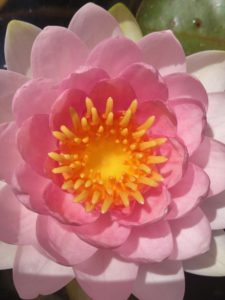 Things to know about caring for lilies:
Things to know about caring for lilies: